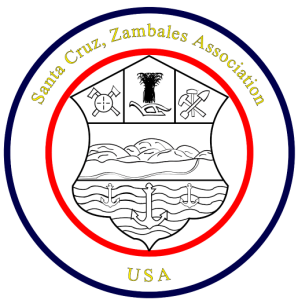
HISTORY
OF THE
SANTA CRUZ, ZAMBALES ASSOCIATION – USA
On January 11, 1997, 17 “Kababali” from the town of Santa Cruz, Zambales met in a restaurant in National City, California. There in the “Manila-Tokyo Restaurant” the idea of creating an association made of citizens from Santa Cruz was formed. After numerous meetings, the SCZA-USA constitution and by-laws were created and accepted by the first members and elected officers.
The first president, Rodolfo “Rudy” Arguilla, led the association for the first four years in its infancy. The learning experiences during the early days made the association stronger and membership grew exponentially.
The purpose of the association was to:
- To establish our town of Santa Cruz with formal representation among the 14 towns of Zambales that have their own respective organizations
- To promote unity and altruism among the people of Santa Cruz here in San Diego, California or anywhere in the United States of America
- To help townmates who are in need, both here in the USA and in the Philippines
- To maintain our roots; keep the spirit of our heritage constant; and keep in touch with our hometown
To date, the association continues to seek and fund projects to benefit the citizens of Santa Cruz. The following are projects completed by the association over the last 19 years:
- Construction of a rear fence of Don Marcelo Elementary School
- Construction of a men’s and women’s bathroom at Lipay High School
- Donation of computers and books to Lipay and Sta. Cruz National High Schools and elementary schools
- Donated 1,500 school bags with school supplies to local elementary schools
- Provided 37 scholarships to students
- Donations to aid victims of Typhoon Cosme and Haiyan
- Rebuild roof of Saint Michael Church
- Construction of community room at Lipay High School
- Donation towards completion of adoration chapel at Saint Michael Church
- Donation towards helping Filipino families in San Diego in conjunction with the Filipino-American Law Enforcement Officers Association
The following presidents and their respective boards helped to make these accomplishments possible:
- Rodolfo “Rudy” Arguilla
- Teofilo “Pilo” Millan
- Gerardo “Gerry” Misa
- Isagani “Sonny” Monta
- Rolando “Dandoy” Bueno
- Teophilson “Teo” Millan